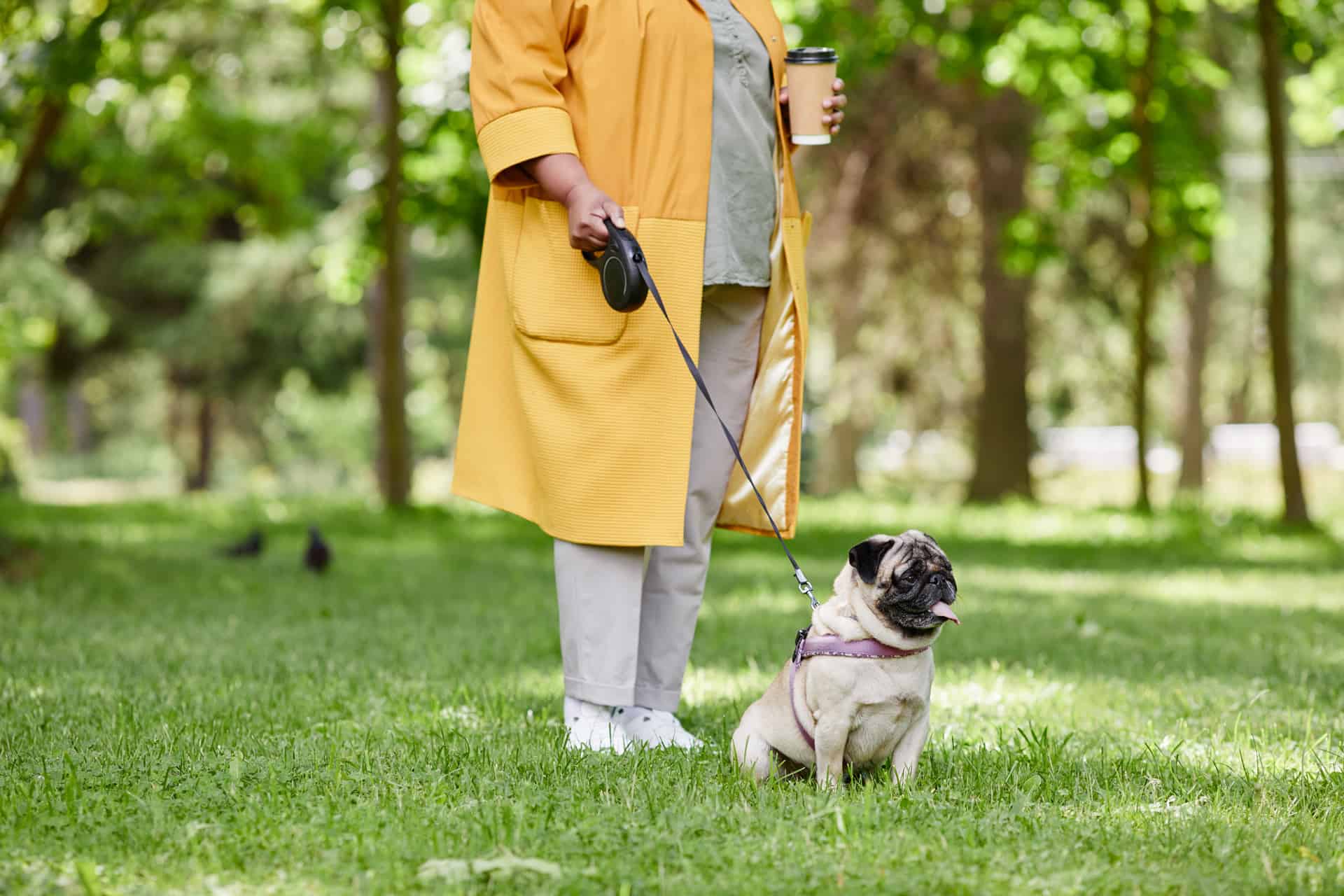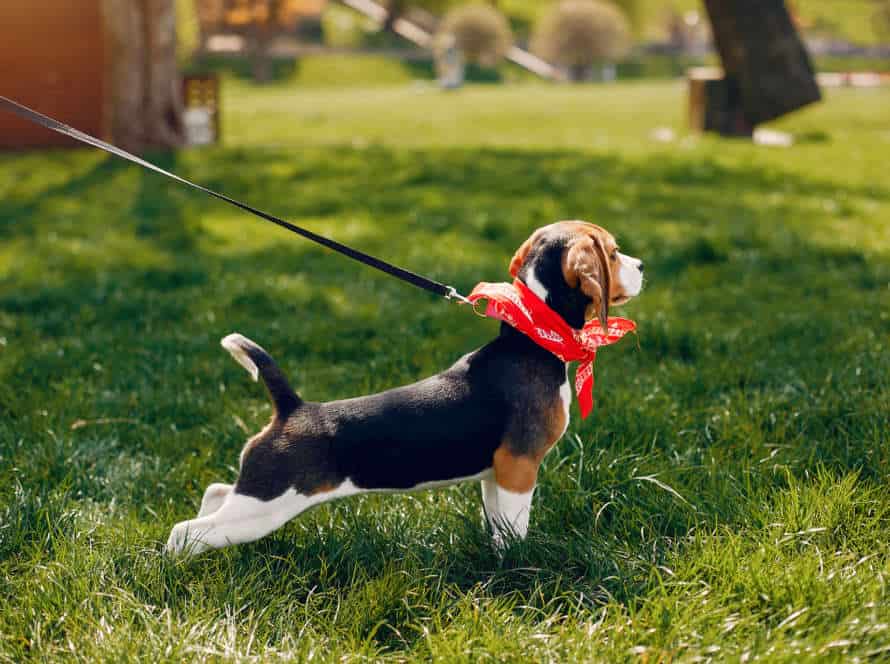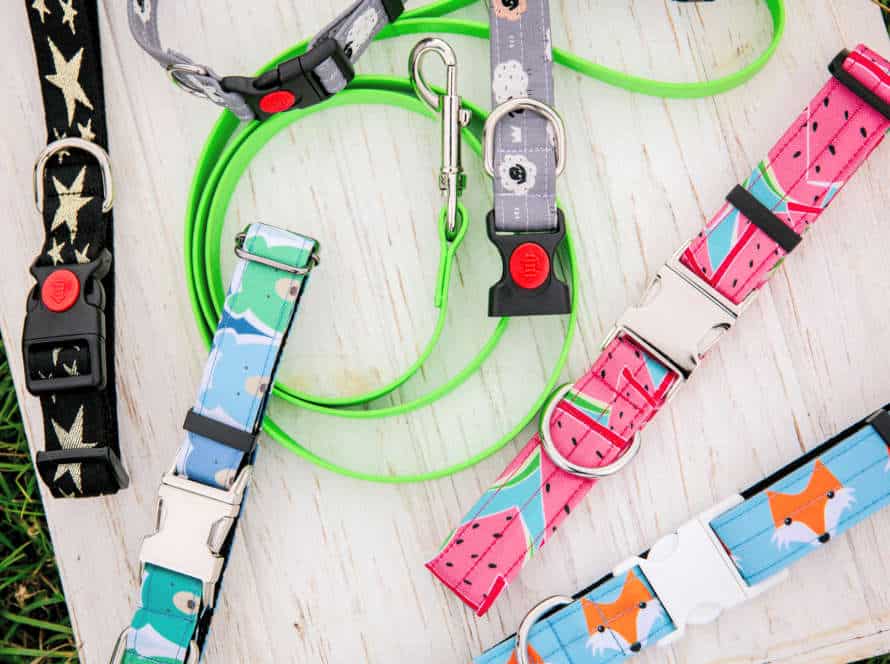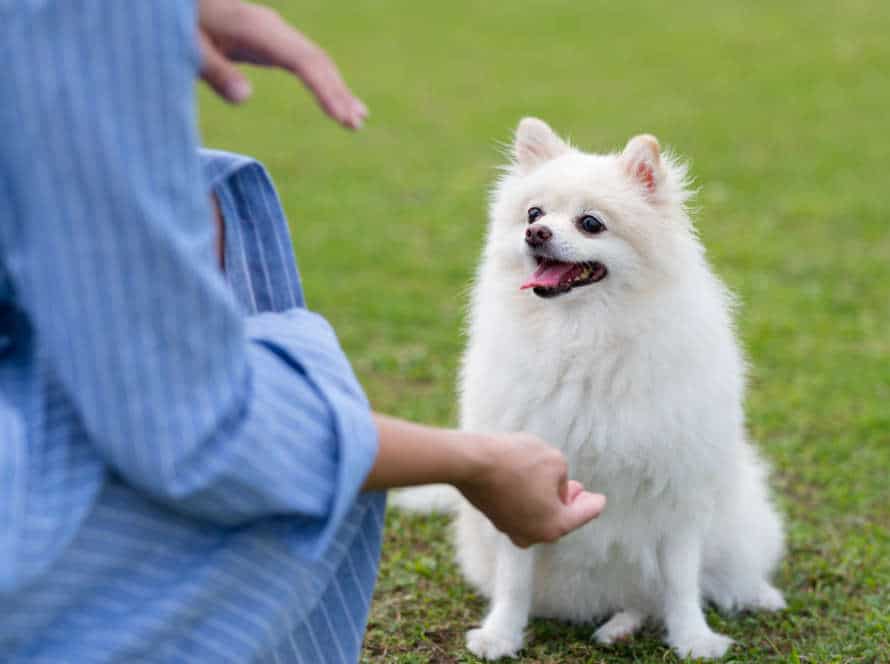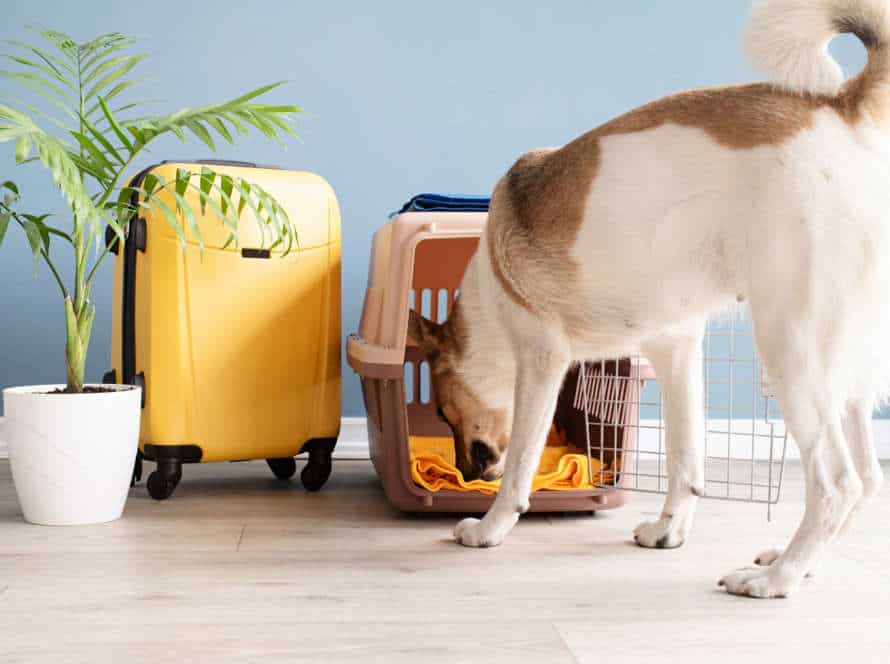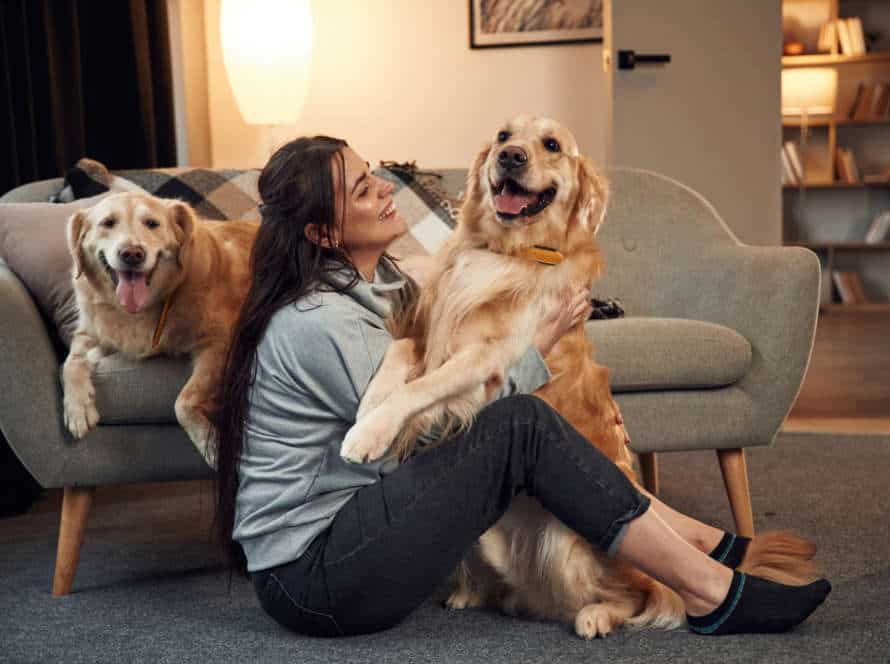How to Transition from Treats to Verbal Praise for Loose Leash Walking
To reinforce good behavior in your dog, transitioning from treats to verbal praise for loose leash walking is key. Here are some tips to help:
- Gradually reduce treats on walks and increase verbal praise and petting.
- Praise and pet your dog when they walk by your side or take fewer pulls on the leash.
- Reward their good behavior with a treat only occasionally, so they don’t expect it all the time.
- Be consistent in your praise and gentle corrections.
- Eventually, your dog will associate verbal praise and petting with good behavior and loose leash walking will be a successful experience for both of you.
Understanding Loose Leash Walking and its Benefits
Loose leash walking? What’s that? It’s a brilliant way to strengthen the connection between you and your pup. They can explore their surroundings safely. Understand the rules of loose leash walking and the advantages it offers. Easily transition from treats to verbal praise. Let’s dive deeper and find out how it can aid you and your pup.
What is Loose Leash Walking?
Loose Leash Walking is a technique to train your pup. This will help them to walk calmly and comfortably next to you without pulling or tugging on the leash. The goal is to create a strong bond between you and your pup and make your walks more pleasurable.
The benefits are endless! Improved physical and mental health for both you and your pup, decreased stress levels, and better bonding.
To transition from treats to verbal praise:
- First, reduce the number of treats you use.
- When your pup is comfortable with minimal treats, give verbal cues like “good job” or “great walking“.
- Eventually replace treats with more verbal cues.
Benefits of Loose Leash Walking
Loose leash walking is a great technique! It helps both dogs and owners. Walks become more fun and less stressful. Here are the benefits:
- Strengthen the bond: Working together encourages closeness.
- Safer walks: Dogs that pull might run into traffic.
- More exercise: Slow walking allows for exploration.
- Less stress: No need for harsh corrections.
To transition to verbal praise, try praising your pup when he walks calmly and redirecting when he pulls. With patience and consistency, he’ll learn that loose leash walking = good times.
Why Transition from Treats to Verbal Praise?
Transition to verbal praise, instead of treats, for training loose leash walking. Benefits for you and your pet? Let’s take a look:
- Long-term Behavior: Treats are great for short-term motivation. But, dogs relying on them can lose interest. Verbal praise brings a more sustainable, long-term solution.
- Stronger Bond: Teaching your dog through verbal commands & praise helps build a stronger bond. You’ll understand each other better.
- Unrestricted Freedom: With loose leash walking, your dog will learn to walk without treats. You two can focus on activities during the walk, like playing and exploring.
Patience & repetition are key. Stay consistent, give commands, and reward positive behavior with verbal praise.
Steps to Transition to Verbal Praise
Loose leash walking is an important part of dog training. It allows your pup to practice self-control and obey commands. Tasty treats are commonly used for this activity. However, you can also use verbal praise.
Here’s how to switch from treats to verbal rewards!
Start Small – Short Walks with Minimal Distractions
Transitioning from treats to verbal praise for loose leash walking can be tough. But, start small and it’ll be easier.
Go for short walks – around your home or backyard. Keep your dog’s leash loose and walk slowly. Let them sniff and explore.
Avoid treats – use verbal cues like “good job,” “well done,” and “yes” to praise them when they don’t pull.
Gradually increase the walk length and add distractions.
Be patient and consistent – give verbal praise each time your dog walks without pulling.
Eventually, they’ll learn to associate verbal praise with good behavior. Loose leash walking will become a breeze!
Use a Clicker or a Word Marker to Signal Good Behavior
Clickers and word markers are a great way to reward good leash training behaviour. Transitioning from treats to verbal praise? Here’s how:
- During a walk, use a clicker or a word marker when your dog is behaving well.
- After the click/word, give a treat as a reward.
- Increase the time between the click/word and the treat.
- When your dog gets used to the clicker/word, replace the treat with verbal praise.
- Finally, phase out the clicker/word with verbal praise alone.
It will take patience, repetition and consistency, but with dedication your pup can become an obedient companion!
Be Consistent with Verbal Praise
Step 2 for transitioning from treats to verbal praise for loose leash walking is to be consistent. Here are the steps to follow:
- Once your dog responds to treats, start with verbal praise like “good job” or “way to go”.
- Be consistent with the same words and tone each time your pup walks on a loose leash.
- Timing is key, so make sure to praise your dog as soon as they start loose leash walking.
- Gradually reduce treats and increase the verbal praise as your dog gets better at it.
Gradually Increase the Duration and Distractions
Transitioning from treats to verbal praise is a must when training your pooch to walk loose-leash. To make this transition a success, gradually increase the duration and distractions of verbal praise.
Here’s how:
- Start off with frequent rewards and use treats for positive reinforcement for good loose-leash walking.
- Slowly increase the time between treats.
- Replace treats with verbal cues such as “good job” or “well done” as your pup’s loose-leash walking improves.
- Now, increase the distractions your dog faces while walking and still continue to use verbal cues followed by treats as an occasional reward.
- Eventually, your pup will begin to associate loose-leash walking with verbal praise and no longer require treats.
Pro tip: Keep training sessions short to keep your dog’s focus and motivation up!
Use a Release Word to Communicate the End of Focused Walking
Text:
Choose a release word, like “free,” “okay,” or “break.”
Say it with a cheery tone when you finish a focused walking session.
Use the release word each time.
Gradually give less treats and more verbal praise as your dog learns to walk on a loose leash.
Always use a cheerful, positive tone when praising your pup.
Increase the Duration of Walks with Distractions
To transition from treats to verbal praise for loose leash walking, it is important to increase the duration of walks with distractions. Here is how to do it:
- Start by taking your pup on a few minutes of loose leash walking with no pulling.
- Then, try going on longer walks in areas with more distraction, like a park or near a playground.
- When your pup is walking well, give them verbal praise and a treat every now and then.
- Increase the duration of these walks gradually.
- Eventually, your pup will respond just as well to verbal praise without treats, even in busy environments.
Reinforce Good Behavior Occasionally with Treats
Treats can be great for rewarding good behavior in dogs. But, using them too often can create a dependency on treats, instead of teaching desired behavior. Here’s how to change from treats to verbal praise for loose leash walking:
- Cut down the frequency of giving treats. Give them randomly, not after every good action.
- At the same time, introduce verbal praise as reinforcement. Use an enthusiastic tone to praise your dog when they have a loose leash.
- Increase the praise and reduce the treats until your dog responds to verbal praise only.
Remember, this will take time and patience. Be consistent and persistent, and soon your dog will recognize your verbal praise like they did with treats.
Common Mistakes to Avoid During the Transition
Loose leash walking? Great! Exercise and mental stimulation for your pup.
But when transitioning from treats to verbal praise, you must be aware of common mistakes. For example, still using treats as the main reward, not giving the reward at the right time, and not enough variety in rewards.
We’ll look at these mistakes to avoid.
Lack of Consistency in Rewarding Good Behavior with Verbal Praise
Many pet owners have difficulty with praising their pet’s good behavior, while transitioning from treats to verbal praise for loose-leash walking. Here are some tips to help:
- Set clear guidelines for yourself on when and how to give verbal praise during a walk.
- Be sure everyone taking part in leash training (e.g. family, dog walkers, sitters) follows the same guidelines to avoid confusion.
- Begin by giving treats and verbal praise for good behavior. Then, gradually decrease the treats as the dog gets more familiar with the routine.
- Be enthusiastic and consistent when using verbal praise if the dog displays the desired behavior.
- Pro Tip: Use a training aid, like a clicker or whistle, along with verbal praise to form a consistent training routine.
Rushing the Transition Process
Transitioning from treats to verbal praise for loose leash walking can be tough. Rushing it is a mistake to avoid. Here are a few things to keep in mind:
- Start small and go up: Decrease treats, start using verbal praise. Increase intervals between rewards as your dog gets it.
- Be consistent: Use same verbal cues and rewards every time.
- Don’t rush: Give your dog time to understand new behavior. Rushing can lead to confusion and frustration.
- Use positive reinforcement: Praise with a positive and encouraging tone when the desired behavior is exhibited. This will help reinforce it for future.
Follow these tips for a smoother transition. Be patient, consistent, and positive.
Not Providing Enough Time for the Dog to Learn
Training your pup to walk on a loose leash can be tough. But, avoiding mistakes makes the switch from treats to verbal praise go better.
Common error: Not giving enough time for your pooch to learn. Moving from reward-based training to verbal praise is a gradual process. It needs patience and lots of consistency.
Here’s what you gotta do:
- Start with high-value treats.
- Then, reduce frequency as your pup starts to walk with a loose leash more often.
- When your pup is comfortable without treats, incorporate verbal praise and physical affection.
- Use an enthusiastic tone to encourage good behaviour.
Remember to stay consistent. All family members must use the same training techniques and reinforce good behaviour with verbal praise. Pro tip: Use positive reinforcement instead of punishment to motivate your pup to walk with a loose leash.
How to Deal with Challenges During the Transition
Dogs can be conditioned to walk on a loose leash with treats. But transitioning to verbal praise can be tricky. It’s essential to know how to make the switch effectively. We’ll examine signs of struggle. Doing so helps to address any issues that may come up while transitioning.
Reverting to Treats – Avoiding Regression
Training your dog to walk on a loose leash can be difficult and frustrating when they regress to their old pulling and lunging habits. To avoid this, use treats to reward them initially and then transition to verbal praise. Here’s how:
- Give treats frequently at first, every few steps.
- Move further apart between treats.
- Mix treats with verbal praise, decreasing treats and increasing praise.
- Show encouragement for good behavior, ignore slips.
By following these steps, your dog will learn to walk on a loose leash without relying on treats. This will make for happier and healthier walks for both of you!
Adjusting Expectations Based on the Dog’s Breed and Age
Adjusting expectations for your pup depends on breed and age. Small breeds tire fast on long walks, while big dogs need more exercise and training. Puppies and young dogs may have shorter attention spans and need more breaks during training.
To transition from treats to verbal praise for loose leash walking, follow these steps:
- Reward your pup with a treat every time they walk politely on a loose leash.
- Gradually reduce the treats, replacing them with verbal praise and physical affection.
- Be consistent and give your pooch time to adjust to the new routine.
- Keep in mind that some breeds and ages will take longer to adjust, modifying expectations is key for a positive experience.
Understanding the Importance of Timing and Consistency
Transitioning to verbal praise? Timing and consistency are key.
Give verbal praise immediately when your pup remains on a loose leash. Praise consistently to reinforce the behavior.
Reduce treats over time, but increase verbal praise.
Patience and persistence will help your pup form the habit of loose leash walking. They’ll learn to respond to verbal praise.
Conclusion – Benefits of Verbal Praise for Loose Leash Walking
To summarize, switching from treats to verbal praise for walking on a loose leash has many advantages.
- Verbal praise is inexpensive and always at hand. You won’t have to bother with taking treats around all the time.
- Plus, verbal praise is more sustainable in the long run, since dogs can become dependent on treats and lose interest in them.
- It can also help strengthen your relationship with your dog, reinforce good behaviour, and make the training process pleasant.
- When transitioning, use a steady, enthusiastic voice and reward your pup right after they show good behaviour, like walking on a loose leash. With patience and practice, your dog will learn to obey without treats.
Frequently Asked Questions
1. Why switch from treats to verbal praise for loose leash walking?
Using verbal praise instead of treats can help your dog become more reliant on your positive feedback and less on food rewards. Additionally, it can be more convenient and cost-effective for owners.
2. How can I stop using treats for loose leash walking?
Begin by gradually decreasing the amount of treats you give your dog during walks while simultaneously increasing verbal praise. Eventually, your dog will associate loose leash walking with positive feedback, even without treats.
3. What types of verbal praise should I use?
Any positive, upbeat phrases or words can be effective for verbal praise. Some examples include “good boy/girl”, “great job”, “awesome”, and “nice work”.
4. Can I still use treats as a reward sometimes?
Yes, it’s okay to use treats occasionally as a special reward. It’s important to not rely solely on treats, as this can make your dog less responsive to your verbal praise.
5. How long does the transition from treats to verbal praise take?
This can vary based on your dog’s personality and previous training, but typically the transition takes several weeks of consistent effort.
6. Will my dog be less obedient without treats?
No, as long as you are consistent with your verbal praise and other positive reinforcement methods, your dog should not be less obedient without treats. In fact, he may become even more responsive to your verbal praise as he learns to rely on your positive feedback instead of just food rewards.

